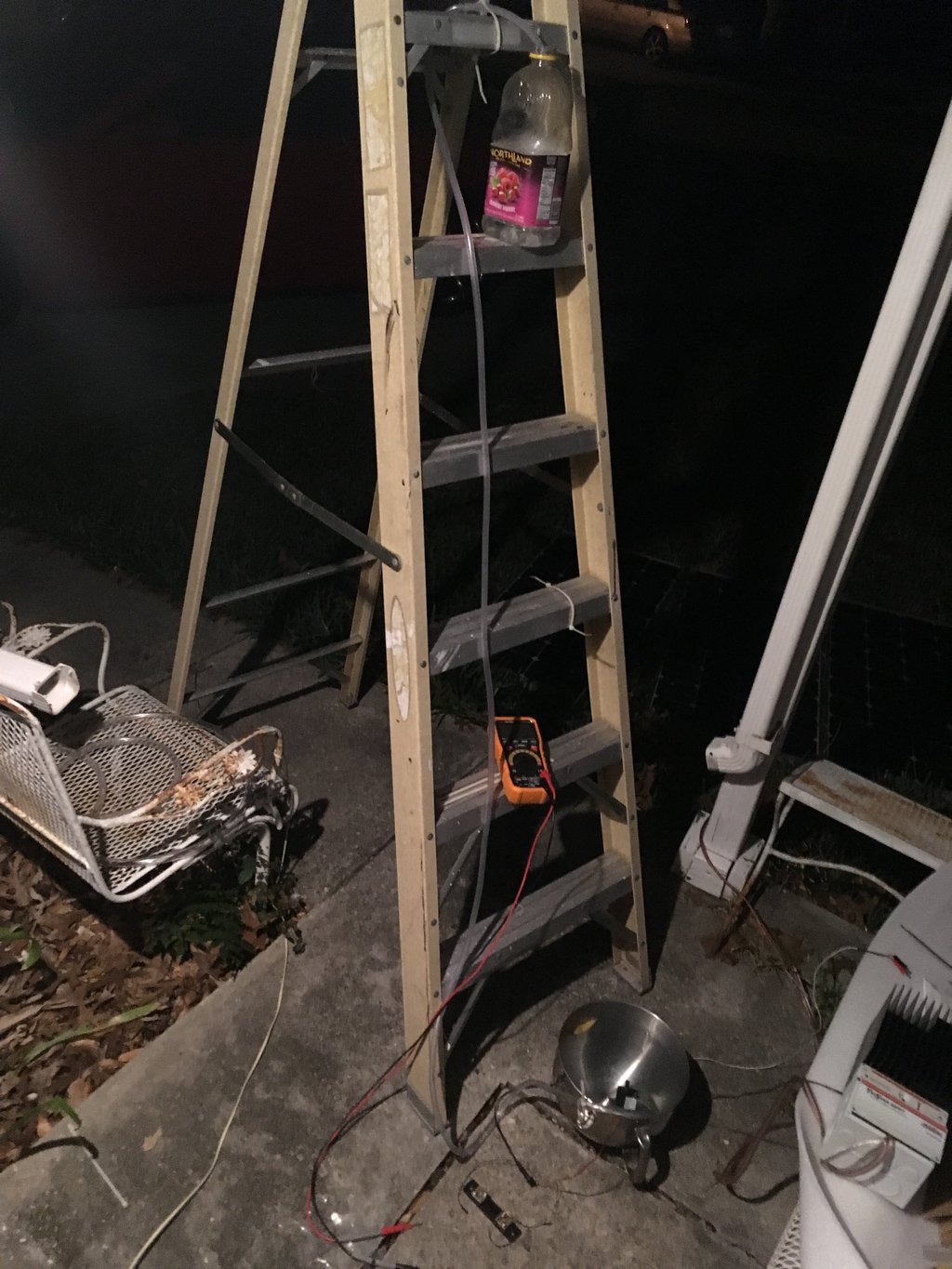I have a small 4 watt water pump with an output port that accommodates 3/8" ID tubing.
I measured the flow rate while pumping to a static head height of 6 foot (see ladder photo).
The flow rate was 0.42 gallons per minute. (1/2 gallon in 70 seconds).
The pump was supplied (measured values) with 12.4VDC @ 310 mA giving 3.84 Watts.
How much of the 3.84 Electrical Watts was Work, and how much was Heat?
What I am going after how much heat is being generated by the pump. This is a concern because it is being used in a electronic cooling project where the pump will be submersed in the water.
I ran the pump in ambient air at 20° C, after one hour the case temperature was 25.2° C.
I had found a formula for calculating work using static head and flow rate. Was not sure 6 foot was the static head. Found an online calculator with a formula for Water Horsepower QxH/3960. Using a static head of 6 foot and 0.42 gallons/minute the formula result was 0.47 watts. I have no way of verifying this is correct. The other formulas required the watts which is the unverified parameter.
The water was pumped through a 7 foot length of 3/8" ID tubing.
Questions:
Is 0.47 Watts correct for the Water Horsepower?
Is the heat 3.84 - 0.47 = 3.37W ?
By logic the heat cannot be 3.37W if the pump temperature only increases by 5°. Working with the LEDs the total Wattage consumed by a single LED is typically 2-3 Watts which much is used in generating the radiant flux so the heat is 1-2 Watts and the LED gets much much hotter than this pump.
WHY?
I was asked why. I am developing water cooled horticulture LED grow lighting. I am going to have a "water tower". It will be a closed system, there will be a water reservoir and a water tank. Both are made out of 4" PVC pipes. There is a 2" PVC pipe "riser" between the reservoir and tank. There will be water pumps in the reservoir pumping water from the reservoir into the tank. Their tubing will be routed through the 2" pipe riser. The 2" pipe will also double as an overflow. If for any reason the flow out of the tank is impeded, any excess water will just end back in the reservoir via the overflow pipe.
To cool the LED fixtures, the water must be kept cool. I wanted to know how much a water pump will contribute to the heat load. As more LED fixtures are added to the system the demand for water from the water tower is easily met by increasing the the flow rate from reservoir to tank.
THE HEATSINK
The heatsink is a solid 0.125" thick copper bar that is soldered to the side of a 1/2" water pipe. The water flowing from the tank to the reservoir will flow through this copper pipe.
THE WATER TOWER
The water tower is 5.5 foot tall so to fit in a horticulture research grow chamber. The center pillar is only to hold up the water tank. The pillar is capped below the "tee" with the supply stub. Nothing flows or is routed through the pillar, it is strictly structural.



